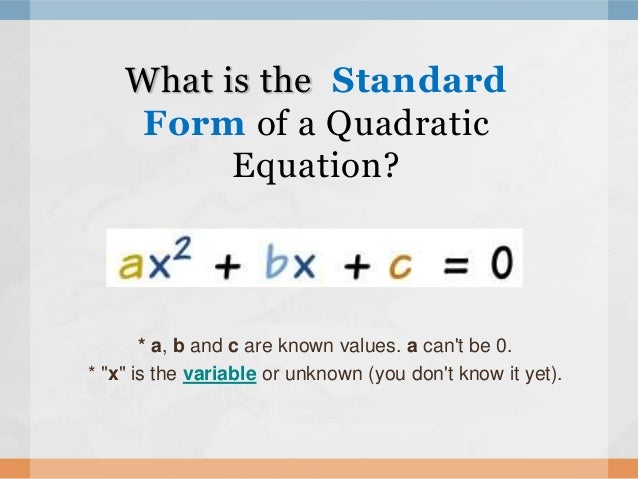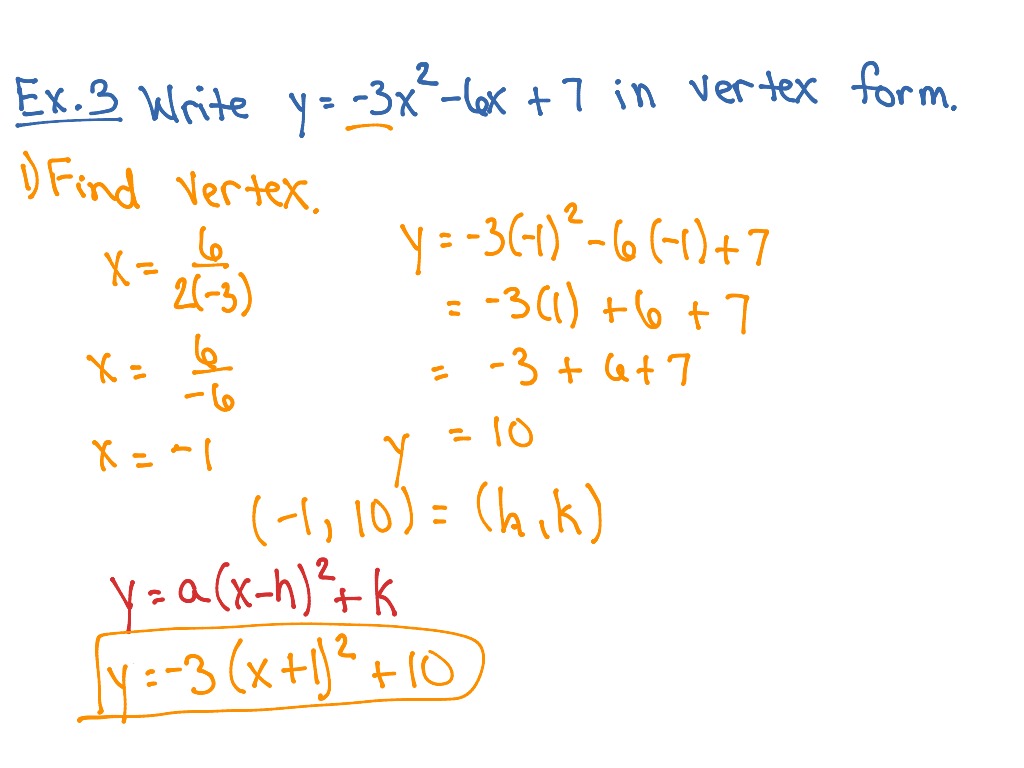

- #Quadratic standard form how to#
- #Quadratic standard form plus#
- #Quadratic standard form professional#
Tutors, instructors, experts, educators, and other professionals on the platform are independent contractors, who use their own styles, methods, and materials and create their own lesson plans based upon their experience, professional judgment, and the learners with whom they engage.

Varsity Tutors connects learners with a variety of experts and professionals. Varsity Tutors does not have affiliation with universities mentioned on its website. Media outlet trademarks are owned by the respective media outlets and are not affiliated with Varsity Tutors.Īward-Winning claim based on CBS Local and Houston Press awards. And we got it right.Names of standardized tests are owned by the trademark holders and are not affiliated with Varsity Tutors LLC.Ĥ.9/5.0 Satisfaction Rating based upon cumulative historical session ratings through 12/31/20. So first I'll do the vertexĪt 2 comma negative 5, which is right there. Which is equal to- let's see, this is equal to 2 squared is 4.
#Quadratic standard form plus#
When x equals 2, y is going toīe equal to 5 times 2 squared minus 20 times 2 plus 15, To substitute back in to figure out its y-coordinate. Sits exactly smack dab between the roots, I want to figure out, is this point right This is true, and you canĪdd 3 to both sides of this. And so this will be true ifĮither one of these is 0. X's will make this expression 0, and if they make Side, we still have that being equal to 0. On factoring quadratics if this is not so fresh- isĪ negative 3 and negative 1 seem to work. And whose sum is negativeĤ, which tells you well they both must be negative. Whose product is positive 3? The fact that their And now we can attempt toįactor this left-hand side. Plus 15 over 5 is 3 isĮqual to 0 over 5 is just 0. Me- these cancel out and I'm left with x squared The x squared term that's not a 1, is to see if I canĭivide everything by that term to try to simplify I like to do whenever I see a coefficient out here on We're going to try to solve the equation 5x Those three points then I should be all set with And then I also want toįigure out the point exactly in between, which is the vertex. Minus 20x plus 15, when does this equal 0? So I want to figure Seen, intersecting the x-axis is the same thingĪs saying when it does this when does y equal I want to first figure out whereĭoes this parabola intersect the x-axis. You can just take threeĬorresponding values for y are and just graph The following equation y equals 5x squared Therefore, 3 and 1 are the only possible x values. So -3 doesn't work as an x, and the same thing would happen with -1:īoth of these solved binomial equations show that -3 and -1 cannot be x values for the parabola. X cannot equal -3 or -1 because if x was -3 then this would happen:

The reason that Sal made the x values positive 3 and 1 is because they are the only two x values that would make his equation equal zero.

#Quadratic standard form how to#
(this basically explains how to get the 3 and 1 for the x values and it explains why -3 and -1 do not work for x values.) I think that was the question you were asking, I hope that helped, if not, hopefully this will: you can check them out if you are still confused. The -3 and -1 were not x values, they were just what he used to factor in a way that he teaches in previous factoring videos. In order to find the x values he used that binomial and made it equal 0, and his x values that he found were 3 and 1. the -3 and -1 were numbers that he got when he factored the equation into a binomial. the -3 and the -1 that he got were not his x values. He didn't exactly switch his x values to positive.


 0 kommentar(er)
0 kommentar(er)
